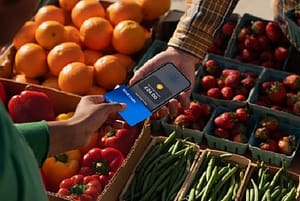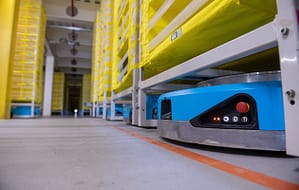The days of lock and key will come to an end. Already, in Bangkok, it’s not uncommon to enter the shared elevator by using facial recognition, in which everyone in the building is listed. But, are biological traits like fingertips and facial recognition full-proof, or is NFC, the technology used for contactless payments, more accurate?
Is biometric security as good as it seems?
Biometric security identifies individuals through traits unique to each person, such as fingerprints and facial patterns, though more avenues are being explored like voice recognition and eye scans.
These systems are nearly impossible to forge if the technology itself is accurate. For example, courts confidently rely on such data as evidence, but the question remains whether the commercial technology uses the same level of precision.
But, it’s not only the technology that is a question, it’s the privacy concerns that people have from storing it. In a way, the more precise and accurate the technology is, the more sensitive the data is. Here, locally run security system may seem more private, but they’re still open to hacks.
NFC technology
NFC enables contactless data exchange between devices within a few centimeters. Pretty much every modern smartphone now has NFC, and it’s a very hygienic way to be contactless. Privacy concerns do not exist with NFC, in part because much of the data can simply be tokenised anyway, like Apple Pay Wallets.
Security solutions like ILOQ that use NFC can be highly adaptive. Retailers put NFC tags in products to provide instant details via smartphone taps, while supply chains use them for real-time inventory tracking. For building security like ILOQ, it makes AirBnB and hotels easier, because you can share the NFC data with them, as opposed to biometric, which would be tricky (and risky) to share. However, it does mean that you need an NFC device on you at all times, and so losing your phone is akin to losing your keys.
Comparing security
Biometrics and NFC cater to different priorities. Biometric tends to do well in environments ironclad security, such as government facilities, where fingerprint or iris scans prevent unauthorized access and, if invested well, can be highly accurate technology.
NFC, though, has great user-centric applications: employees gain office entry with a smartphone tap, and hotels offer contactless check-ins via NFC wristbands. For home use, NFC may be more convenient too if you’re frequently changing your appearance, such as with beards and face coverings.
Cost is another differentiator. Biometric hardware, like facial recognition cameras, requires substantial installation costs if they are to be accurate. NFC, however, uses technology that’s already relevant, like smartphones.
Does the future lie in biometric and NFC integration?
The future may lie in hybrid systems, where NFC can be a first layer access, while fingerprint can be second. For example, getting into a shared building might be easier with NFC, as this allows the building manger to more easily add people, such as guests, new residents, and even courier drivers. But for long-term residents, fingerprint technology for their front door can be reliable enough as an option, though some residents may prefer two-layer NFC.
For financial institutions, a bank customer might authorize a high-value transaction by tapping an NFC-enabled device while undergoing facial recognition—a process that will be robust to phishing and deepfake attacks.






Leave a Comment